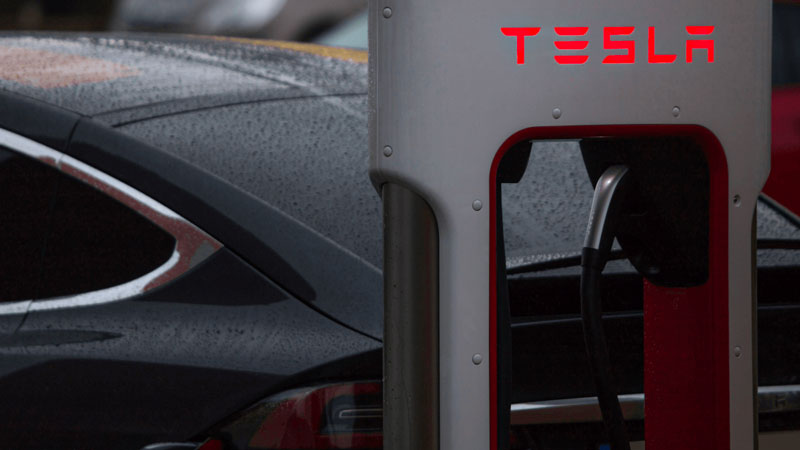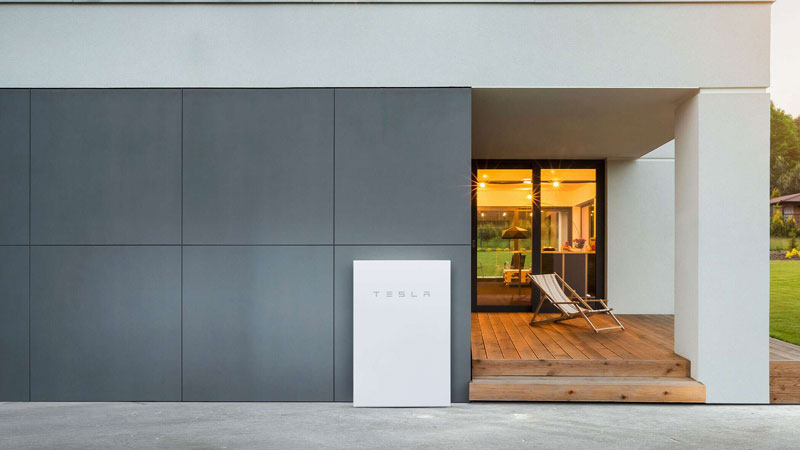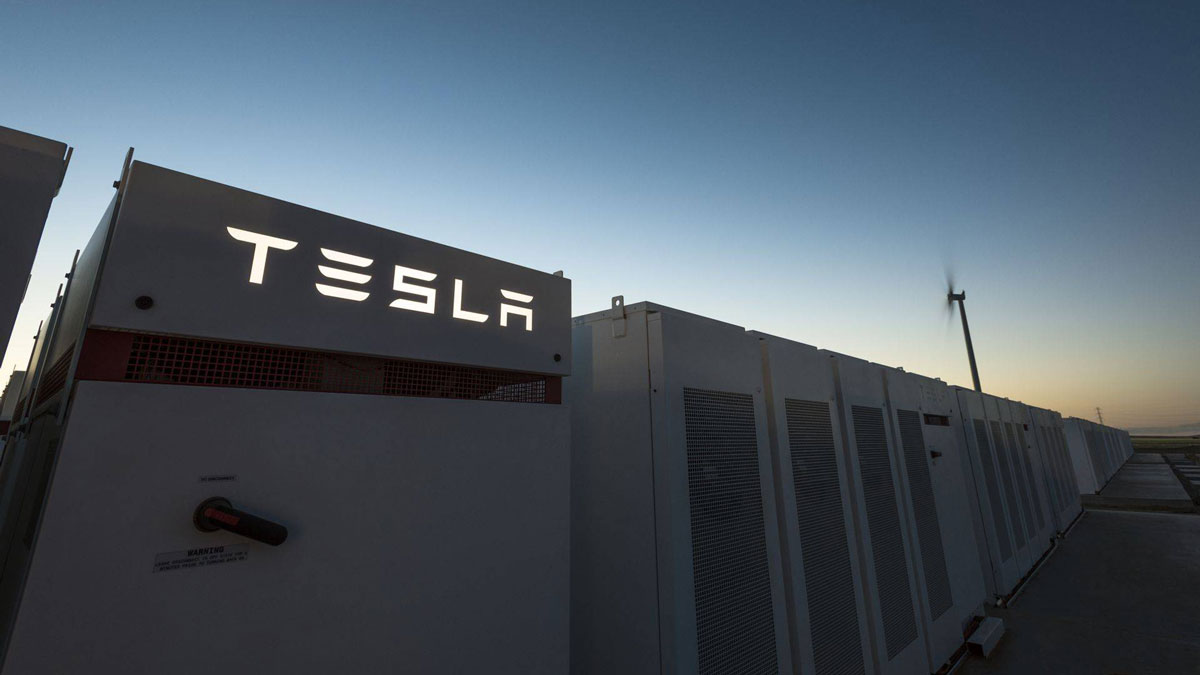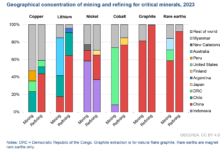Tesla: Shaping Tomorrow
Tesla, Inc. was founded by Elon Musk, its current CEO, and Jeffrey B. Straubel, Martin Eberhard, and Marc Tarpenning back in 2003. It seemed to be a company that focused on the design, development, manufacturing and sale of electric vehicles, but it has turned out to be much more than that. They sparked the flame for the Electric Vehicle (EV) market a long time ago but they seem ready to expand strongly in energy generation, energy storage systems, robo-taxis and much more. It also develops vehicle service centers, supercharger station networks and also engages with artificial intelligence.
The company operates the segments of Automotive and that one of Energy Generation and Storage. The Automotive segment includes the design, development, manufacture and sale of electric vehicles. The Energy Generation and Storage segment includes the design, manufacture, installation, sale, and lease of stationary energy storage products and solar energy systems, and sale of electricity generated by its solar energy systems to customers. It also develops energy storage products for use in homes, commercial facilities and utility sites.
Tesla vision
Tesla has proved over and over again that it’s here to lead the way and change the world. Early on, they adopted a unique approach with their go-to-market strategy and putting their first wheels on the streets. They focused on creating a high-end, powerful car instead of trying to build a relatively affordable one, easy to mass produce.
Elon Musk specified back then the company’s mission, “If we could have (mass marketed) our first product, we would have, but that was simply impossible to achieve for a startup company that had never built a car and that had one technology iteration and no economies of scale. Our first product was going to be expensive no matter what it looked like, so we decided to build a sports car, as that seemed like it had the best chance of being competitive with its gasoline alternatives.” Enter Tesla Roadster; the rest is history, still being written. By the time Tesla introduced their sedan, the Model S, in June 2012, it had stopped producing the Roadster. They began delivering their first SUV, the Model X, in September 2015. The first Model 3 deliveries kicked off in July 2017.
Once Tesla established its brand and gained momentum with its concept car, it reiterated its business model and pursued a three-pronged approach with selling, servicing, and charging the electric vehicles they produced.
Contrary to the legacy industry players and the older competitors, who distribute and sell through franchised dealerships, Tesla uses direct sales. They established a vast international network of company-owned showrooms and galleries, in prominent urban areas. Through the direct ownership of the distribution channel, Tesla gained an advantage in the speed of reiterating its product development. Additionally, that implies higher margins, through cutting out the middle-man. Finally, it was also proven that this approach offers a better customer buying experience. Every staff member in the showroom, works for Tesla and their own goal is to sell more for the company.
Tesla has close to 500 locations, including service centers, all over the world. They combined many of their showrooms with service centers, based on the idea that a service center in a new area implies increased customer demand. Tesla car owners can charge or service their vehicles at the service centers or the Service Plus locations. The futuristic feature here is that in some cases, no onsite technician is required at all as the car can wirelessly transmit data so Tesla technicians can review and fix problems online without ever needing to physically touch the car.

When it comes to their Supercharger network, Tesla has created its own network of charging stations, where car owners can fully charge for free their Tesla vehicles within about 30 minutes or less. The rationale behind the idea is to facilitate and accelerate the rate of adoption for electric cars. Without the ability to charge on the go electric cars faced a huge challenge for scalable adoption. Tesla continues expanding the network of Supercharger stations in the United States, Europe, and Asia.
Based on the notion of pushing for sustainability, and Tesla’s mission “to accelerate the advent of sustainable transport”, there are additional areas of operations. Tesla engaged with powertrain systems and components to other auto manufacturers as well as a line of home batteries, the Powerwall, serving as energy storage cell. Tesla also sold solar panels, full solar roofing along with the Powerwall. Additionally, Tesla engaged with standard loans and leases. And they even provided some downside protection on a vehicle’s value in case of reselling it. It is also rumored they would eventually break into the Insurance sector as well.

Is Tesla just a car company?
Maybe it’s about time to start scratching the surface of the discussion about the ‘Software Component’. The essence was always there, but it was not always visible to the broad audience. Afterall, what would a car manufacturer have to do with developing software? Many analysts scrambled to find similarities between other tech companies like to Apple Inc. (AAPL) and Alphabet Inc. (GOOG) subsidiary Google. Strangely, this conversation started due to Tesla (TSLA) stock and its valuation which skyrocketed really early on, after the company’s public listing in the stock market. One cannot simply avoid talking about Tesla’s stock and its crazy high valuations that still no analyst can accurately explain.
There are several points of resemblance between Tesla and other giants of the tech sector when it comes to their valuation and market capitalization. To start with, Tesla’s valuation in the markets had skyrocketed even when it was reporting losses. That is a very common characteristic of the so called ‘Growth’ stocks that are highly anticipated and gain momentum due to speculation that they will eventually dominate their markets.
Tesla is also very keen on breaking and proving the inefficiency of the legacy business models within the automotive industry; that is one of the reasons this company generates love for its followers and hate for the others; maybe also because Elon Musk makes sure to openly mock doubters and other non-believers. We seldom find analysts, journalists, industry stakeholders or even common people being stoic or neutral when it comes to Tesla. Elon Musk and his company evoke loyalty and awe as well as hatred and disbelief similar to those for iconic tech companies such as Apple.
At the end of the day, the key point lies in the fact that Tesla develops cars like they develop software; they strive for agility, efficiency and quality. They also create software on their own unique hardware, like Apple, Microsoft and other tech giants. This approach does not only enable Tesla to optimize its cars’ software functionality continuously but it is the sharpest contrast to the legacy automaker industry model where after you get the car, you’re pretty much on your own with it; it can only get worse, not better.
Tesla’s strategy differentiation
No one claims that Tesla invented the electric car or anything close to that; but they are indeed responsible for bringing the notion of electric vehicles in the lives of most of us. They not only spread the news like a wave, they made it look cool, they made much cheaper and they did all that while creating breakthroughs in terms of technology, go-to-market strategy and workflow efficiency. Tesla’s unique business model, which keeps direct control over sales and service, is just one of the reasons the company is doing so well.
Tesla invented what seems to become the most successful business model for introducing electric cars to the broader audience. What other automakers did was to invest ‘just in case’ or for PR purposes in electric vehicles; for Tesla it was a one-way ticket.
It needs to be addressed though, that even if Tesla might seem to be steering the electric car market of the 21st century, the traditional automakers are indeed bigger, richer and still powerful. Companies such as Toyota, Ford, GM, Honda, BMW, Mercedes are also now investing significantly in EV development programs. Tesla has delivered highly ranked vehicles so far, but traditional automakers have deep pockets, already well-established supply chains, and global market reach. The sleeping giants seem to have awakened by the constant and annoying pocking of Tesla.
Tesla’s Model 3 was the US’s top-selling luxury car for 2018, within the first year of its launching. Tesla still faced significant production challenges, struggling to keep pace with customer demand. Back in 2018 they managed to deliver about 7000 Model every week. This number is ramping up real fast, even amidst the crisis. One of the strategic power moves Tesla made for this was their Gigafactory 3 in Shanghai which broke ground back in 2019. Gigafactory 3 even if it was scrutinized, due to Chinese inspections and other rumors, successfully delivered immense impact. Model 3s coming out of Gigafactory 3 proved to be pivotal to Tesla’s powerplay and will also nullify the challenge if import tariffs for one of the largest markets for EVs globally.
Tesla is also the pioneer of autonomous driving technology. Their Autopilot assist system includes auto-steering, automated lane changing, traffic cruise control and other features whose combination offers a complete self-driving experience while keeping the driver in ultimate control of the car. Elon Musk himself mentioned: “I personally tested the latest alpha build of the full self-driving software when I drive my car. And it is really, I think, profoundly better than people realize; It’s almost getting to a point where I can go from my house to work with no interventions, despite going through construction and widely varying situations.”
Another pivotal differentiation with traditional automakers is that Tesla tries to own as much manufacturing as it can in-house, including batteries and drive trains. Most of the other players rely heavily on other suppliers for almost every single part of their production chain. Tesla is becoming increasingly autonomous, at scale, as it spreads production costs for batteries across its energy and storage unit.
Tesla spends no money on advertisement for their cars. They rather use the software ‘inbound’ sales model, compelling the ‘smart’ consumers to find them and come to them. That is evident from the way they treat the whole customer experience journey, from their galleries all the way to their very nimble on-line sales approach.
One more thing that definitely needs to start being addressed is the very much speculated ‘Battery Component’. The Tesla battery-powered cars are dramatically simpler than their internal combustion competitors. Some estimations bring the internal car parts to around 20, contrary to the 2000 in a usual internal combustion engine. This level of simplicity immensely reduces the consumers total cost of ownership. Tesla has also acquired smaller battery making companies, developing cutting edge technology, and has been working for a long time in increasing dramatically the car’s range. In Tesla’s upcoming ‘Battery Day Event’ it is rumored that Elon Musk will reveal the ‘Million Mile Battery’. On top of that, the battery business can and will probably develop into an autonomous segment, with Tesla selling their batteries to other companies, as it seems they are years ahead of competition in terms of technology.
We also have the ethical standpoint, where Tesla seems to also be taking the lead. Part of Elon’s vision has been and still is to push for Greener solutions (solar in particular) and that is reflected in Tesla’s DNA. Traditional automakers have been trying to offer electric car solutions but only as a small fragment of their product portfolio, more like a ‘nice to have’ approach.
Volkswagen, with their emission scandal still fresh, admitted through its chairman that Tesla posed indeed a great competitive threat. One of the most significant challenges Volkswagen and other automakers are facing is what Tesla has developed as their competitive ‘mote’: they lack the technological expertise to compete with the software-like developed car. Tesla has been and still is doubling down on this aspect.
Players of the old legacy car industry automakers are now starting to see the big picture that Tesla has been painting for so long; they will eventually follow and reallocate their vast resources in order to become software companies and start becoming more efficient but the real question still remains: how much ahead is Tesla?
Tesla as a stock
Of course, we cannot avoid the discussion about Tesla’s stock and the company’s valuation, which has reached almost astronomical heights. Even with their delivery numbers accelerating immensely over the first years (2014 to 2018 sales have reached 570% increase), Tesla recently started showing signs of profitability, with Q2 2020 being the fourth consecutive profitable quarter. It has to be underlined though, that the company’s priorities have been research and development and manufacturing, which absorbed tremendous amounts of cash.
The acceleration continued, with company’s revenue reaching 83% to USD 21.5 billion back in 2018 driven by an 87% increase in car sales revenue. The number of cars sold in 2018 reached 138%, meaning about 250 thousand vehicles compared to 2017. Streams of revenue increased significantly from Service sales and from the energy segment.
The stock, which reached a low of about USD 350 in the March crash has quintupled since then and crossed USD 2000 several times before the company decided to apply a 5/1 split, when stock owners received dividends of 4 more stock for each one they had at 1/5 of the price (so the value remained the same).
The company’s market capitalization which has reached almost USD 350B is “discounting far more than cars,” Morgan Stanley analyst Adam Jonas mentioned adding that: “Tesla’s performance is seen by some as breathing all the air in the room with respect to the outlook for competing electric vehicle initiatives, particularly amongst legacy players.”
The stock currently trades at USD 400 per share and the upside seems to be significant, in anticipation of the upcoming ‘Battery Day’, where it is expected that Elon Musk will unveil lots of innovative breakthroughs in terms of Battery technology, manufacturing and self-driving. Especially for that last aspect, Tesla has come under severe scrutiny in the past for making potentially exaggerating claims about the capacity of their self-driving systems. It remains to be seen if they will be able to deliver, as a lot of new tremendous opportunities might open up (self-driving taxis etc.).
Tesla shaping tomorrow
In an upcoming article we will review in further depth the competitive technological moat that Tesla seems to have built, protecting their head start.
One thing that no one can deny them is that this company seems to have shaken up for good the very traditional and potentially stagnant automotive industry. They have introduced and made widely accessible technical features that would sound like science fiction only years ago; truth is that some of the things Tesla claims still sound like science fiction; if we want to take a step further, to many analysts and traditional industry stakeholders, Tesla seems to be science fiction as a whole.
Maybe what we are seeing is just Tesla shaping tomorrow!







